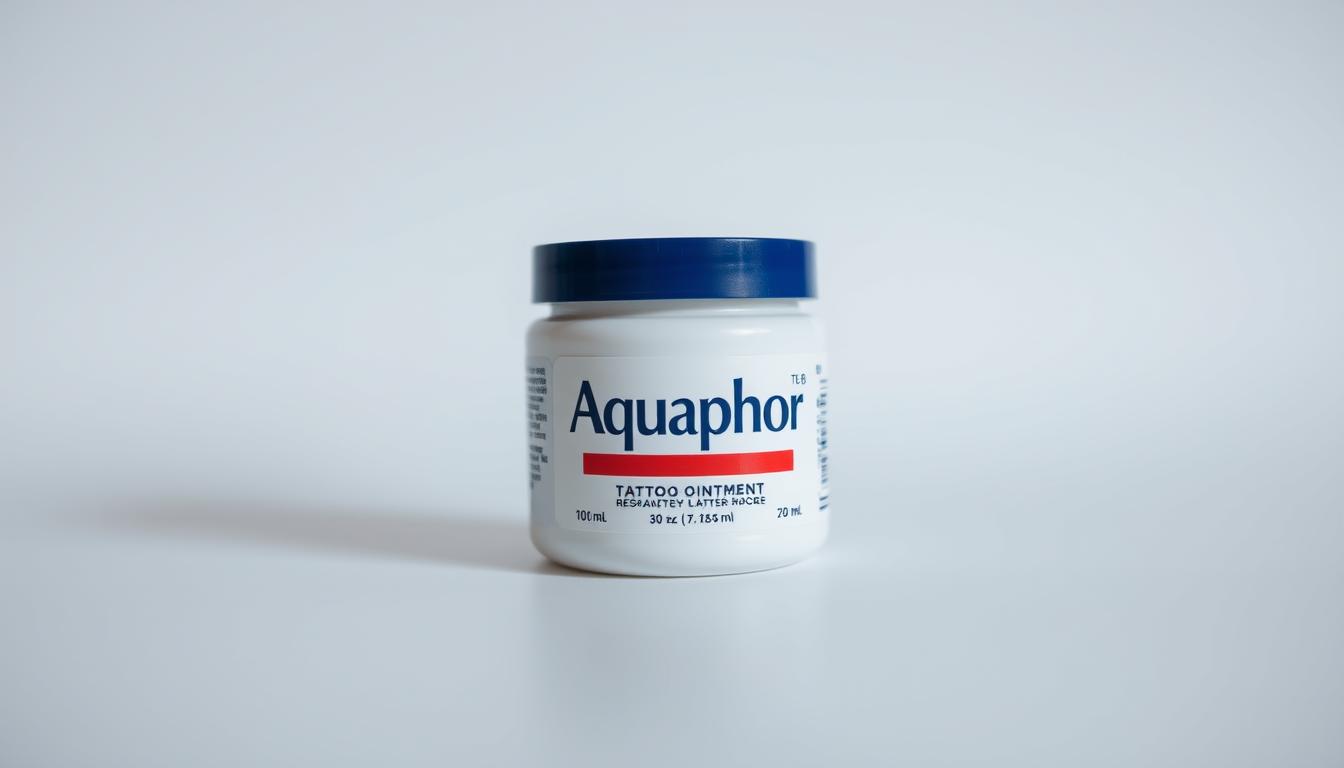
What if the secret to perfect tattoo healing isn’t fancy creams or pricey treatments—but a humble product sitting in your medicine cabinet? Millions swear by this dermatologist-trusted ointment during the delicate healing phase, yet many still wonder: does it truly deliver lasting results for vibrant body art?
Fresh ink isn’t just art—it’s an open wound. Your skin needs gentle protection to heal without fading or infection. The right aftercare product creates a breathable shield, locking in moisture while letting cells regenerate. Enter a formula with petrolatum and skin-loving additives like chamomile extract, designed to calm irritation and accelerate recovery.
Tattoo artists often recommend this multitasking ointment because it balances hydration without clogging pores. Its glycerin-rich base pulls moisture from the air, while lanolin mimics your skin’s natural oils. This combo prevents scabbing and color loss, giving your design the best chance to stay crisp.
Key Takeaways
- Three powerhouse ingredients work together to hydrate and protect healing skin
- Anti-inflammatory properties reduce redness and swelling around fresh ink
- Proper application techniques prevent over-moisturizing during critical healing stages
- The moisture barrier created supports cellular repair without suffocating skin
- Affordable accessibility makes it a top choice among professionals and clients
You’ll soon discover why this ointment has become the go-to for preserving tattoo clarity. From first-day care to long-term maintenance, we’re breaking down the science-backed methods to keep your body art looking gallery-ready.
Introduction to Tattoo Aftercare and Aquaphor
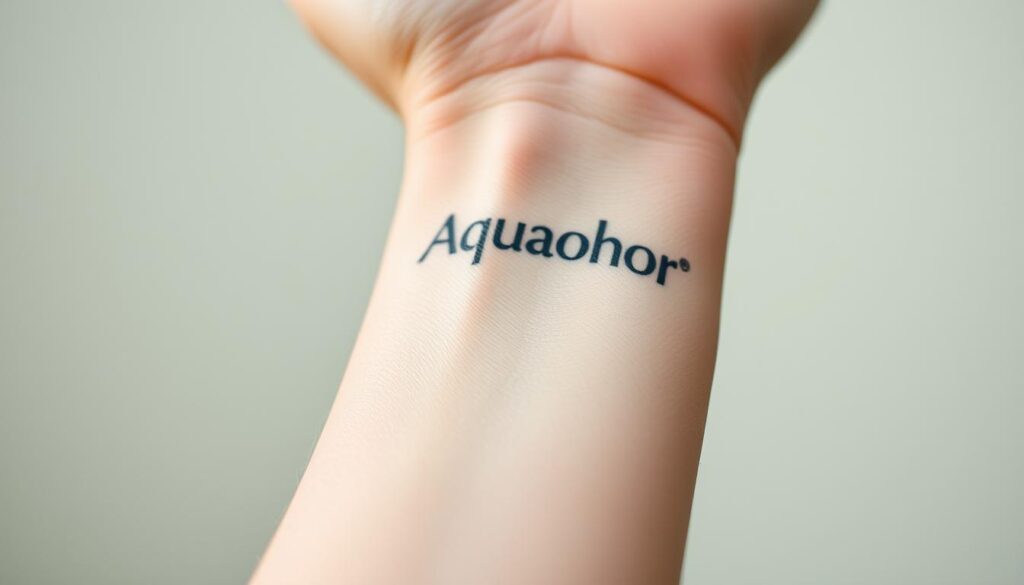
New tattoos aren’t just art—they’re open wounds needing expert attention. For 3-4 weeks, your body works to repair the controlled injury created by the needle. This healing phase determines whether your design stays crisp or becomes a blurry disappointment.
Why Your Fresh Ink Demands Special Attention
That vibrant artwork is actually vulnerable skin working overtime. Without proper care, you risk infection, ink loss, or uneven healing. The first 72 hours are critical—this is when your body starts forming protective layers and fighting bacteria.
Building Your Healing Toolkit
Successful recovery requires two key elements: consistent cleaning and smart moisturizing. Products like Aquaphor create a breathable shield that locks in moisture without suffocating cells. Pair this with gentle washing to remove plasma and ink excess—your skin’s repair crew will thank you.
Watch for normal healing signs: slight redness, mild itching, and thin scabs. Warning flags include pus, extreme swelling, or heat radiating from the area. Your artist gave you a temporary masterpiece—now it’s your turn to make it permanent.
Understanding Aquaphor and Its Key Ingredients
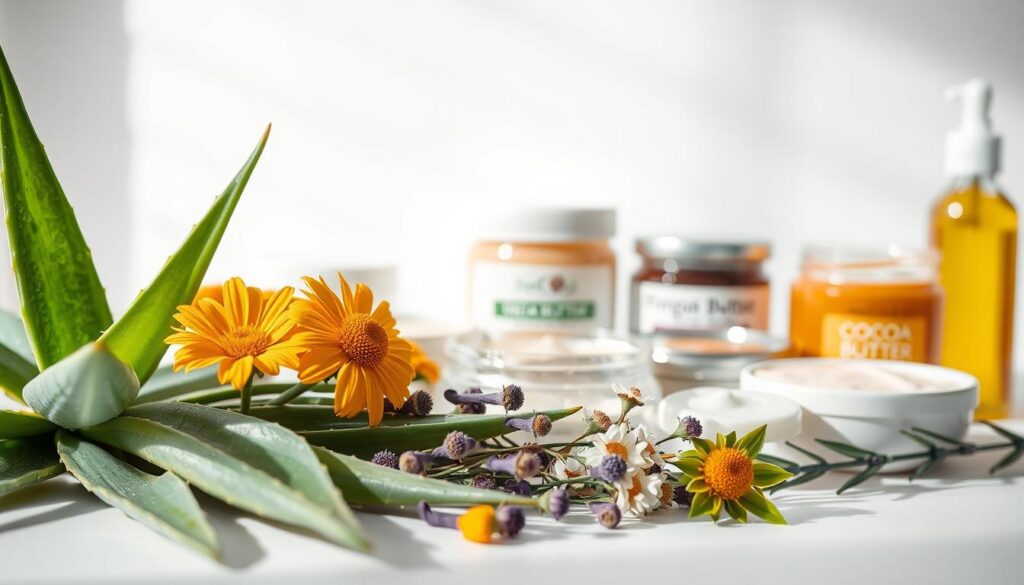
Behind every vibrant tattoo lies a carefully chosen blend of skin-healing components. The right formula acts like a construction crew for your damaged skin—repairing, protecting, and rebuilding simultaneously. Let’s explore what makes certain ingredients indispensable during this critical phase.
What Makes This Ointment Special?
This dermatologist-approved product combines medical-grade petrolatum with moisture-boosting allies. Unlike basic petroleum jelly, it’s enhanced with skin-nourishing elements that transform simple protection into active healing support. The refined formula meets strict safety standards while remaining gentle on sensitive areas.
Powerhouse Components Explained
Petrolatum forms an intelligent barrier—sealing hydration without trapping bacteria. Derived through rigorous purification processes, it’s far removed from crude oil origins. Glycerin works overtime as nature’s moisture magnet, pulling hydration from the air into your skin cells.
Lanolin, a natural wax from sheep’s wool, mimics your skin’s oils to prevent cracking. Combined with panthenol (provitamin B5), these ingredients reduce inflammation while accelerating cell regeneration. Together, they create the ideal environment for crisp line preservation and color retention.
How Aquaphor Supports the Healing Process
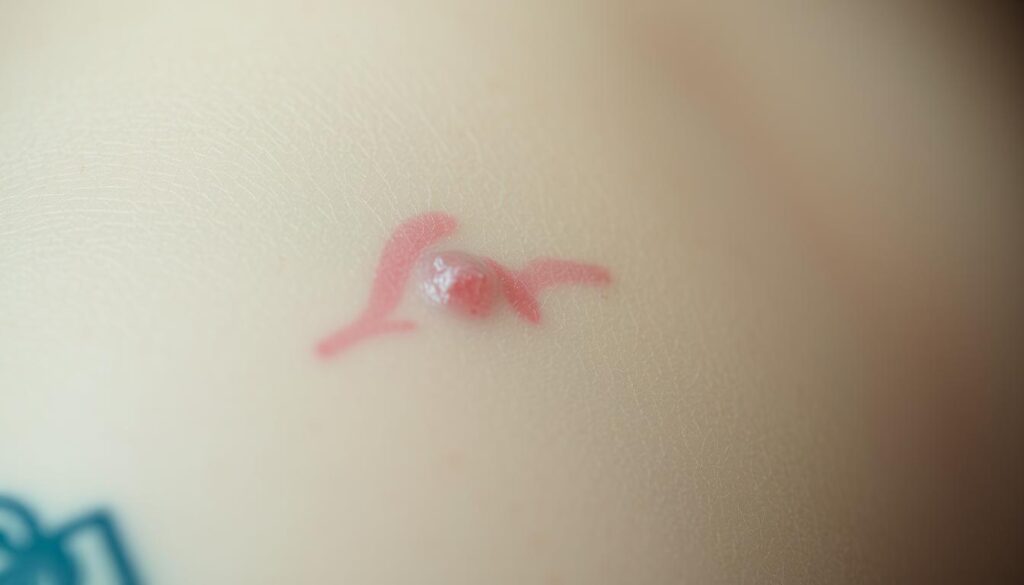
Your fresh body art needs more than luck to stay vibrant—it requires science-backed protection. The right aftercare product acts like a skilled medic, addressing two critical needs simultaneously: physical shielding and biological recovery.
Creating a Moisture Barrier on New Ink
Think of your healing skin as a construction site needing weather protection. A semi-occlusive formula forms scaffolding that locks in natural hydration while letting cells breathe. This balance prevents the dreaded “plastic wrap effect” that cheaper products cause.
The barrier does double duty—trapping your skin’s moisture like a smart thermostat while blocking germs and debris. Unlike thick ointments, it adapts to your body’s needs, reducing excessive scabbing that can pull out ink particles.
Anti-inflammatory and Soothing Effects
Chamomile-derived bisabolol steps in as your personal peacekeeper. This natural compound calms angry nerve endings, easing that persistent itch without numbing creams. Less scratching means fewer accidental ink disruptions.
Swelling and redness fade faster thanks to ingredients mimicking your skin’s repair signals. By creating cleaner healing conditions, you’re giving pigment molecules their best chance to settle evenly into the dermis.
Benefits of aquaphor for tattoos in Your Healing Routine
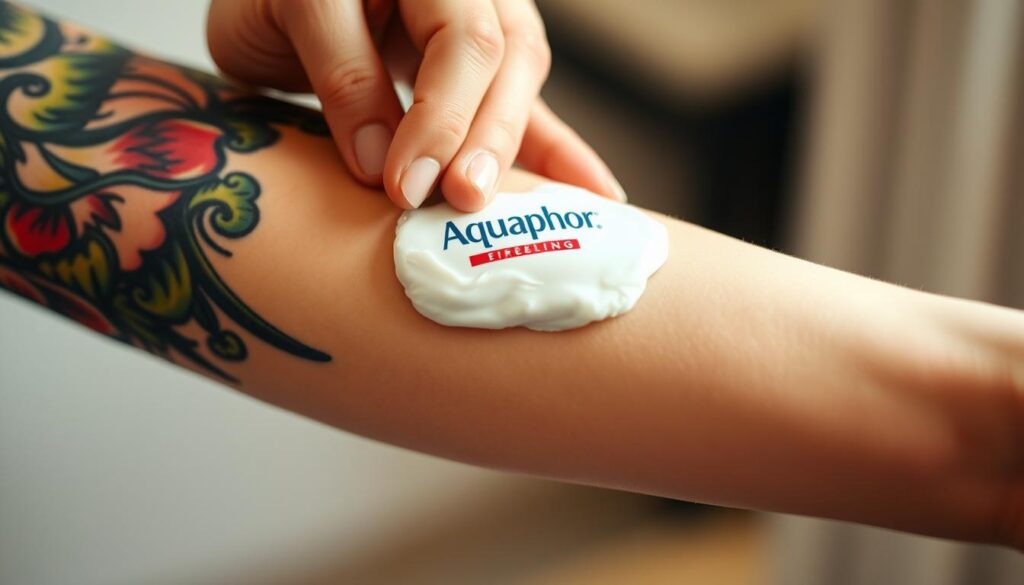
Ever wonder why some body art stays crisp while others fade into blurry memories? The difference often lies in maintaining perfect moisture levels during those critical first weeks.
Hydration and Protection for Fresh Tattoos
Your new body art thrives in a Goldilocks zone—not too dry, not too soggy. The right product creates an invisible safety net that lets cells rebuild while locking in natural moisture. This balance stops thick scabs from forming and pulling out pigment particles.
Consistent hydration does more than prevent itching. It gives your design time to settle evenly into the dermis. Less scratching means fewer accidental disruptions to the healing process. You’ll notice colors stay vibrant when moisture levels stay steady.
Many artists recommend this ointment because it works with your body’s natural repair system. Unlike heavy balms, it allows oxygen flow while shielding against dust and bacteria. This dual action keeps your artwork safe without feeling greasy.
Affordability matters when you need multiple daily applications. A budget-friendly option means you won’t skimp on care during crucial healing stages. Plus, its simple formula reduces irritation risks for sensitive types.
Environmental threats like dry air or clothing friction become non-issues with proper protection. Think of it as a breathable bandage that moves with you. Your ink gets the defense it needs without compromising comfort.
When you use Aquaphor as directed, you’re giving your skin exactly what it craves—gentle support that adapts to your healing timeline. That’s why it remains a top choice in studios nationwide.
Pros and Cons of Using Aquaphor for Tattoo Aftercare
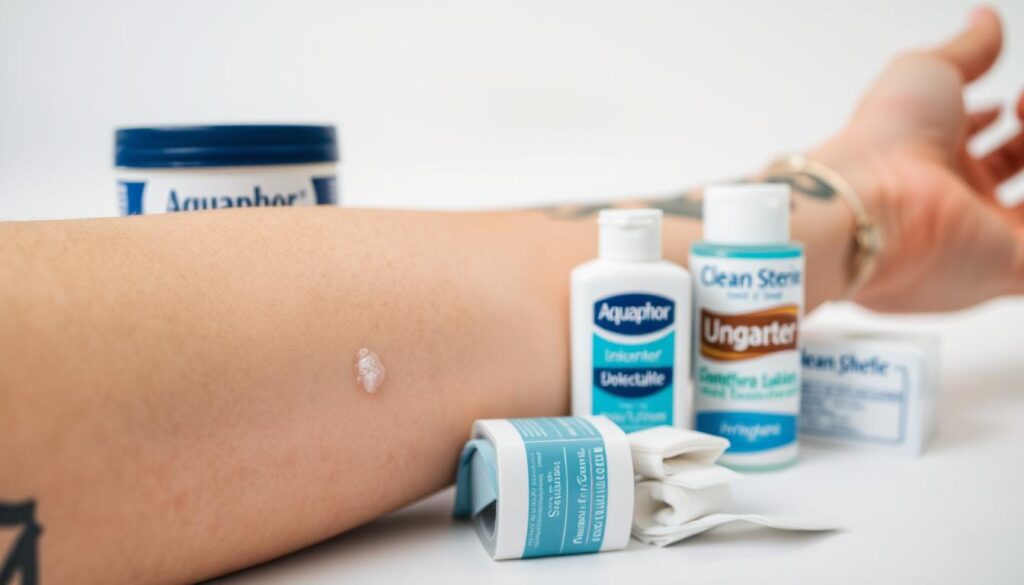
While many swear by petroleum-based ointments for healing body art, debates about their impact on ink longevity persist. Let’s unpack why this common product divides opinions in the tattoo community.
Moisture Mastery You Can Trust
This jelly-like formula shines in three areas: accessibility, gentle hydration, and medical credibility. Its petroleum base creates a protective seal that keeps healing skin supple without irritating sensitive areas. You’ll find it’s kinder than scented lotions when your nerves feel raw.
For people on a budget, the product’s widespread availability matters. No specialty stores needed—grab it while buying groceries. Its track record in treating burns and scrapes gives peace of mind when caring for fresh ink.
The Ink Retention Debate
Here’s where things get interesting. Some artists worry petroleum and mineral oil could bond with plasma during healing. “Think of it like oil mixing with watercolor paint,” explains a Brooklyn-based tattooist. This interaction might pull pigment particles to the skin’s surface as fluids drain.
While no major studies confirm significant ink loss, some people report faded lines after using these products. The risk appears highest during the first 72 hours when plasma production peaks. Yet countless others heal vibrant tattoos using this method—your experience may vary.
Your best move? Consult your artist and monitor how your skin responds. Balance the proven moisture benefits with personal observation to keep your design crisp.
Step-by-Step Guide to Applying Aquaphor on Your New Tattoo
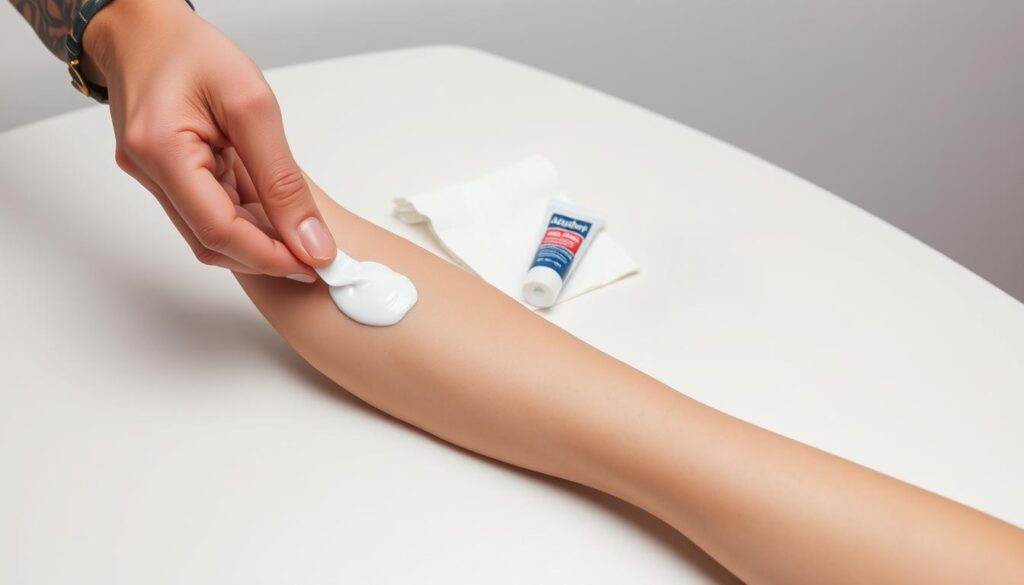
Your fresh body art deserves precise care from day one. Let’s walk through the exact routine professionals recommend to keep colors vivid and lines sharp.
Immediate Post-Tattoo Application Instructions
Start by removing your artist’s protective wrap after 2-5 hours. Use lukewarm water and fragrance-free soap to cleanse the area gently—no scrubbing. Pat dry with paper towels instead of cloth to avoid lint or bacteria transfer.
Apply a translucent layer of ointment—think “gloss” rather than “glop.” Too much product creates a swampy environment for germs. You want just enough to let skin breathe while locking in natural moisture.
Repeat this wash-dry-moisturize cycle 2-3 times daily for the first week. Morning and evening sessions work best for most people. Watch for signs of over-moisturizing like excessive shine or tackiness—adjust amounts if needed.
Clean hands are non-negotiable every time you touch the area. Artists often note: “Your phone screen has more germs than a toilet seat—don’t risk it.” Stick to the schedule even when itching peaks around day three.
By day five, you’ll notice less fluid secretion. This signals your skin’s transition phase—keep applications consistent but ultra-thin. Proper technique now prevents color loss later when scabs naturally form and shed.
When and Why to Transition from Ointment to Lotion
Knowing when to switch products can make or break your ink’s staying power. Your healing skin needs different support as it moves through recovery phases. Ointments work best during the initial open wound stage, while lotions take over once surface healing begins.
Timing the Switch for Optimal Healing
Most artists suggest switching after 5-7 days. Watch for these signs: less tenderness, fading redness, and no fluid oozing. This usually happens around week two—but everyone’s timeline differs slightly.
Start by mixing a pea-sized amount of ointment with unscented lotion. Gradually increase the lotion ratio over three days. This blended approach prevents shocking your skin with sudden changes.
Choose a lotion with natural moisturizers like shea butter. Avoid alcohol-based formulas that strip moisture. Apply thin layers 2-3 times daily—enough to keep skin supple without greasiness.
Remember: Rushing this process risks flaking and color loss. If scabs still form after switching, add one more week of ointment use. Your artwork’s longevity depends on matching products to your skin’s evolving needs.
